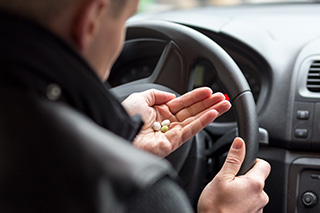First published by Get Smart About Drugs.
Drugged Driving—What You Should Know
Check out a few key frequently asked questions and answers about drug-impaired driving below.

What is drug-impaired driving? Driving under the influence of over-the-counter medications, prescription drugs, marijuana, or illegal drugs.
How common is drug-impaired driving? In 2019, 13.7 million people (ages 16 and older) drove after using illicit drugs. Of that total,12.8
million people were under the influence of marijuana (2019 National Survey on Drug Use and Health: Detailed Tables).
This is an increase from 2018 when 12.6 million people (aged 16 and older) admitted to driving after using drugs.
In 2016, 44 percent of drivers in fatal car crashes (with known results) tested positive for drugs, according to a report entitled “Drug-Impaired Driving: Marijuana and Opioids Raise Critical Issues for States” by the Governors Highway Safety Association. This is up from 28 percent in 2006.
 Why is drug-impaired driving dangerous? Over-the-counter (OTC) medications and drugs
Why is drug-impaired driving dangerous? Over-the-counter (OTC) medications and drugs
affect the brain and can alter perception, mental processes, attention, balance, coordination, reaction time and other abilities required for safe driving. Even small amounts of some drugs can have a serious effect on driving ability.
A national survey showed 22.5% of nighttime weekend drivers tested positive for illegal, prescription, or OTC drugs that can impair driving. (Drug-Impaired Driving: A Guide for States, April 2017. NHTSA 2014 Drug-Impaired Driving Survey)
What substances are used the most when driving? After alcohol, marijuana is the most commonly used drug. (Source: National Institute of Drug Abuse)
What happens when you use drugs and drive? Marijuana can decrease a person’s ability to drive a car. It slows reaction time, impairs a driver’s concentration and attention, and reduces hand-eye coordination. It is dangerous to drive after mixing alcohol and marijuana. Driving after using prescription drugs or over-the-counter medicine, such as cough suppressants, antihistamines, sleeping aids, and anti-anxiety medications may impair driving ability.
Read More
McCraren Compliance can help you understand and comply with FMCSA, DOT and ADOT and ensure your drivers and your vehicles operate safely and efficiently.
Call us Today at 888-758-4757 or email us at info@mccrarencompliance.com to schedule your free FMCSA Compliance Assessment.


